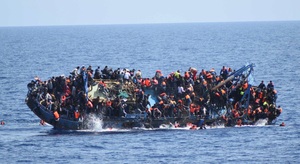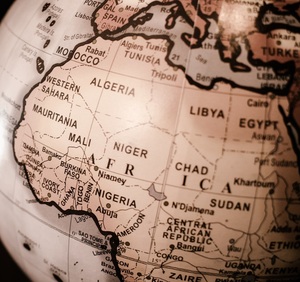By Soha Youssef, Learning and Development Coordinator at UNU-MERIT and alumna of the 2018/19 MPP cohort (specialised in Migration Studies)
In October 2023, the Dutch Migration Minister Eric van der Burg met with several Egyptian government officials (including the Development Minister and the Minister of Immigration)[1] to enhance cooperation between the two countries and address the various challenges and opportunities related to migration in both Egypt and The Netherlands. This cooperation deserves recognition in international politics, since it demonstrates the value of collaborating on global issues – and on the management of migration in particular, which is known to be a complex and multifaceted worldwide concern. In the context of this collaboration, both governments have acknowledged the importance of advancing and strengthening policy development and local development to address the root causes of irregular migration. This article aims to outline how this type of cooperation can lead to better outcomes for both migrants and host communities, beginning with an overview of the migration situation in Egypt.
Background
Migration to Egypt
In North Africa, Egypt is the closest safe harbour for conflict-ridden countries like Sudan, Somalia and South Sudan. The country is known for being a host state to migrants from many countries, starting with Palestine after 1948, followed by sub-Saharan countries after the 1990s. According to the International Organization for Migration (IOM), Egypt currently hosts approximately 9 million international migrants originating from 133 countries.[2] In this article, a migrant is defined as:
“any person who is moving or has moved across an international border or within a state away from his/her habitual place of residence, regardless of (1) the person’s legal status; (2) whether the movement is voluntary or involuntary; (3) what the causes for the movement are; or (4) what the length of the stay is.”[3]
The main countries of origin are Sudan (4 million), Syria (1.5 million), Yemen (1 million) and Libya (1 million).[4] During one of the aforementioned Dutch-Egyptian cooperation discussions, the Egyptian minister Sameh Shoukry shed light on the efforts made by the Egyptian Government to host refugees and migrants. The Dutch minister also endorsed Egypt’s outstanding efforts in combatting irregular migration and the controlling of its borders.
Migration from Egypt

An overcrowded refugee boat capsizes in the Mediterranean (photo taken in May 2016). Marina Militare/Handout via Reuters
IOM defines irregular migration as the ‘movement of persons that takes place outside the laws, regulations, or international agreements governing the entry into or exit from the State of origin, transit or destination’.
After multiple ships carrying irregular migrants from Egypt to Europe sank, resulting in hundreds of deaths, Egypt has strongly increased its maritime border control in the last 6 years.[5]
As a consequence, since 2016, almost no boats carrying irregular migrants have left the Egyptian coast.[6] And yet despite these efforts, Egyptian nationals have continued to arrive in large numbers in Italy, departing mainly from Libya. In March 2022, EU countries registered the highest numbers of asylum applications by Egyptian nationals since 2014. In August 2023, 67 percent of all applications from Egypt were lodged in Italy.[7] According to the UN High Commissioner for Refugees (UNHCR),[8] Egyptian nationals mainly embark from Libya.
Egyptian nationals also migrate to Europe through regular channels; Schengen visa statistics show that nearly 170,000 uniform visas were applied for by Egyptians in 2021 (of which almost a fifth were not issued).[9] Notably, Egypt is among the top six remittance-receiving countries[10] – remittances from Egyptians working abroad during the period from January to August 2022 totalled USD 20.9 billion.[11]
To learn more about Egypt’s migration situation and its historical background, you can check out this three-part YouTube video series by Professor Melissa Siegel, head of Migration Studies at UNU-MERIT:
Migration from Egypt to The Netherlands specifically
In 2020, The Netherlands was the European country with the fifth-largest Egyptian migrant population (almost 16,000). Italy, France, Greece and Germany had larger Egyptian diasporas in that year.[12]
Regarding irregular migrant stays, according to Eurostat data, over 5000 Egyptian nationals were ‘illegally’ staying in the Netherlands in 2022,[13] which marks the highest number of Egyptian nationals ‘illegally’[14] present in the country since 2013.
Prior cooperation between The Netherlands and Egypt
The recent cooperation discussions between the Dutch and Egyptian governments are not the first of their kind. In September 2021, Egypt’s Ministry of Foreign Affairs hosted a bilateral consultation session between Egypt and The Netherlands on the topic of immigration and irregular migration.[15] At the end of the session, the two governments signed a letter of intent regarding their cooperation on migration.[16] The discussions addressed aspects related to migration governance and highlighted the importance of addressing legitimacy, facilitating labour movement and voluntary return and reintegration.[17]
The meetings in October 2023 are therefore in line with the efforts of the Egyptian Government in strengthening cooperation and partnerships around migration with not only The Netherlands but also other European Union countries.[18]
Key elements of the 2023 Dutch-Egyptian cooperation discussions[19]
Capacity building and training
|
Economic opportunities
|
Policy harmonization
|
The strong example of the Egyptian-German Center for Jobs, Migration and Reintegration
During Minister Eric van der Burg’s visit, the Egyptian Government officials shared the successes of the Egyptian-German Center for Jobs, Migration and Reintegration (EGC). The German Federal Ministry for Economic Cooperation and Development introduced this programme in line with the Egyptian “life-saving boats” initiative.[20] EGC offers economic and social reintegration measures for Egyptian returnees, as well as information and advice about the labour markets in Egypt and Germany. Their other services include career development interventions, employment promotion, training programmes and the provision of information on the requirements for regular migration, in addition to spreading awareness about the risks of irregular migration. Furthermore, the center provides capacity development opportunities for governmental institutions and civil society organizations. Lastly, they offer psychosocial support for employability and reintegration.
Going forward
Broadening the Dutch-Egyptian cooperation on migration management could certainly help Egypt with its development process, particularly in the area of employment. Egypt has a large labour force and identifying employment gaps in The Netherlands would open more doors for Egyptians. This cooperation also creates the potential for a more humane and effective approach to migration management. The continuation of such a cooperation could also potentially improve Egypt’s economic wellbeing.
Despite Egypt’s efforts in introducing legislation to prevent irregular migration, Egyptian nationals have managed to find different irregular routes to Europe. It is concerning that despite the security situation in Libya, some Egyptians are still using the central Mediterranean corridor to travel, since they are at risk of kidnapping and extortion.[21] Of course, the establishment of the Egyptian National Coordinating Committee for Combating and Preventing Irregular Migration and Trafficking in Persons in 2017 was a positive step towards improved migration management.[22] However, it is not clear whether the funds of this committee are spent more on border security and border reinforcement, or on actually tackling the root causes of irregular migration.
According to a report published by IOM, the majority of the Egyptian migrants in Libya cited economic concerns as their top reason for migration.[23] The Egyptian Prime Minister Mostafa Madbouly described the current financial crisis in Egypt as the worst in a century.[24]
The discussions on migration management need to consider additional push factors beyond the economic situation in Egypt. According to the second cycle report released by the Universal Periodic Review[25] [26], Egypt is still facing various human rights challenges, including civil, political, economic, social and cultural rights. The report also provided recommendations in order to ensure the empowerment of the country’s women, children and young people, and to improve Egypt’s current situation regarding its refugees and migrants. Combatting corruption, irregular migration, and human trafficking were other areas highlighted in the report. The Egyptian government has fully accepted 224 out of the 300 recommendations laid out in the Universal Periodic Review report, and has developed projects, governmental bodies, or enacted/amended laws to comply with the recommendations.
Migration management is indeed a complex and multifaceted global issue. There is a need to address the root causes of Egyptian migration through research that investigates the aspirations of people. The economic and political situation in Egypt has been shown to play an important role in the migration of Egyptian nationals, but more research is needed. Understanding the decisions of migrants and potential migrants is fundamental to both policy makers and societies; migration decisions are made under specific circumstances and usually bring lasting consequences (Czaika et al, 2021).[27] An in-depth study on the decision-making processes of Egyptians considering migration could be a good start to help the government in establishing a bottom-up approach when tackling the root causes of migration.
REFERENCES
[1] Egypt Today (2023). Egypt FM Shoukry Discusses Combatting Illegal Immigration with Dutch Counterpart. Retrieved from: www.egypttoday.com/
[2] IOM (2022). IOM Egypt Estimates the Current Number of International Migrants Living in Egypt to 9 Million People Originaing from 133 Countries. Retrieved from: egypt.iom.int/news/
[3] Ibid. 2
[4]Ibid. 2
[5] European Union Agency for Asylum (2022). Egypt as a Country of Origin, Retrieved from: https://euaa.europa.eu/
[6] UPR (2019). National report submitted in accordance with paragraph 5 of the annex to Human Rights Council resolution 16/21. Retrieved from: https://www.upr-info.org/
[7] Ibid. 5
[8] UNHCR (2023). Italy Sea Arrivals Dashboard. Retrieved from: https://reliefweb.int/report/italy/
[9] The Schengen visa statistics (2022). Schengen visa statistics by third country. Retrieved from: https://statistics.schengenvisainfo.com
[10] World Bank (2022). Remittance Brave Global Headwinds. Retrieved from: https://www.knomad.org/
[11] Central Bank of Egypt (2023). Remittances Press Release. Retrieved from: https://www.cbe.org.eg/en
[12] United Nations Population Division(2020), International Migrant Stock 2020 [Destination and Origin], 2020, accessed 6 November 2023.
[13] Eurostat (2023). Enforcement of Immigration Legislation. Retrieved from: https://ec.europa.eu/eurostat/
[14] Third country nationals who are detected by Member States’ authorities and have been determined to be illegally present under national laws relating to immigration (see Art. 2.1 (r) and 5.1(b) of the Council Regulation (EC) no 862/2007). This category relates to persons who have been found to have entered illegally (for example by avoiding immigration controls or by employing a fraudulent document) and those who may have entered legitimately but have subsequently remained on an illegal basis (for example by overstaying their permission to remain or by taking unauthorised employment). Only persons who are apprehended or otherwise come to the attention of national immigration authorities are recorded in these statistics. These are not intended to be a measure of the total number of persons who are present in the country on an unauthorised basis.
[15] Daily news (2021). Egypt, Netherlands discuss measures to counter irregular migration. Retrieved from: https://www.dailynewsegypt.com
[16] Government of Netherlands (2021). Minister Broekers-Knol Takes Important Step in Cooperation on Migration with Egypt. Retrieved from: www.government.nl/
[17] Maswrawy (2023). The Minister of Foreign Affairs Appreciates the Integrated Cooperation with the Netherlands to Combat Illegal Immigration and Human Trafficking (translated). Retrieved from: https://www.masrawy.com/news
[18] Youm 7(2023). Dutch Minister of Immigration: Egypt is a leading and pivotal country for Europe and plays an important role in the Middle East (translated) retrieved from: https://www.youm7.com/story/2023
[19] State Information Service (2023). – The Minister of Immigration discusses with her Dutch counterpart enhancing joint cooperation (translated). Retrieved from: https://www.sis.gov.eg/
[20] United Nation Network on Migration (2022). Egyptian-German Center for Jobs, Migration and Reintegration. Retrieved from: https://migrationnetwork.un.org
[21] Ibid. 5
[22] Ibid. 5
[23] Ibid. 12
[24] Al Monitor (2022). Egypt to sell state-owned firms amid economic crisis. Retrieved from: https://www.al-monitor.com/
[25] Ibid. 6
[26] National report submitted in accordance with paragraph 5 of the annex to Human Rights Council resolution 16/21 ( A/HRC/WG.6/34/EGY/1)
[27] Czaika et.all (2021). Migration Decision-Making and Its Key Dimensions. Retrieved from: https://journals.sagepub.com/
ANY COMMENTS?
NOTA BENE
The opinions expressed here do not necessarily reflect the views of UNU.
MEDIA CREDITS
Photos: iStock / Aleksandra Aleshchenko, James Wiseman on Unsplash and Marina Militare/Handout via Reuters, CC BY-NC 4.0 (all three images were cropped)





